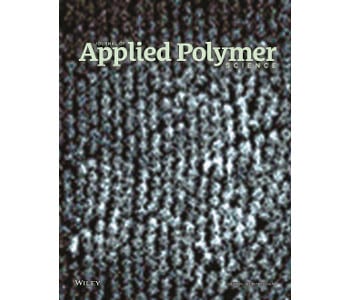Enhanced oil recovery (EOR) processes are becoming increasingly important as energy demand rises. Methods currently used to recover oil from reservoirs typically only extract 15-30% of that available. EOR aims to extract some of the remaining oil left behind by primary and secondary recovery techniques. Rafael Verduzco and colleagues at Rice University discuss recent research into the use of polymer-coated nanoparticles (PNPs) for EOR in an informative review, published in the Journal of Applied Polymer Science.
 PNPs are nanoparticles with polymer chains grafted to the surface, and less is known about their behaviour at the oil-water interface important for EOR processes than non-coated NPs. Over the last ten years techniques have been developed that enable a wide range of polymer-coated nanoparticles with controlled polymer length, polymer composition, grafting density, and core type to be prepared. This in turn has led to a greater understanding of the behaviour PNPs in different environments useful for applications, such as EOR.
PNPs are nanoparticles with polymer chains grafted to the surface, and less is known about their behaviour at the oil-water interface important for EOR processes than non-coated NPs. Over the last ten years techniques have been developed that enable a wide range of polymer-coated nanoparticles with controlled polymer length, polymer composition, grafting density, and core type to be prepared. This in turn has led to a greater understanding of the behaviour PNPs in different environments useful for applications, such as EOR.
Research into using nanoparticles for EOR has been going on for some time; however a smaller amount of work has been carried out on PNPs. With the new ability to fabricate a variety of PNPs coupled with the gaining knowledge of their characteristics, PNPs are emerging as a class of materials that has the potential to be superior to the non-coated counterpart.
The review covers several ways in which PNPs are being used to improve EOR processes. The first is research into polymer- and surfactant-coated nanoparticles in foams and emulsions. This is valuable for controlling the mobility of the injected fluid that displaces the oil. It is known that oil can more easily be extracted from water-wet rock than from oil-wet rock; therefore using PNPs to change the wettability of rock is another approach to the problem that is discussed. Finally the ways in which PNPs can be manipulated to improve their transport through porous materials are reviewed. In each case, some space is given to the fundamental investigations that have given rise to the application.
There is much work still to be done but already a few materials have been successfully tested in the field, clearly demonstrating the efforts of research scientists in this are warranted.

















